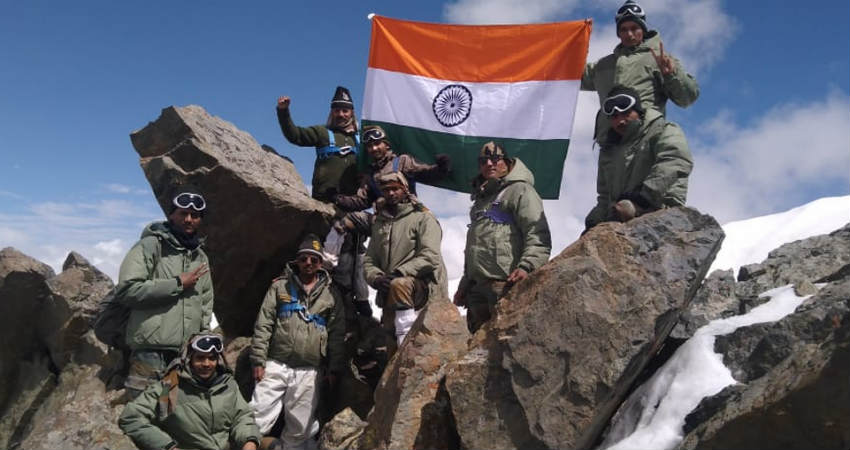As we commemorate the 25th Kargil Vijay Diwas, it is essential to reflect on the events that led to one of the most significant military victories in Indian history. The Kargil War, fought between India and Pakistan from May to July 1999, not only tested the resolve of the Indian Armed Forces but also demonstrated their capability to achieve victory even in a formidable terrain chosen by the enemy.
Brewing of conflict
The seeds of the Kargil conflict were sown in the spring of 1999, just a few months after a historic peace initiative. On February 21, 1999, Indian Prime Minister Atal Bihari Vajpayee and Pakistani Prime Minister Nawaz Sharif signed the Lahore Declaration, a landmark agreement aimed at fostering peaceful relations between the two countries. This diplomatic gesture, symbolized by Vajpayee’s journey to Lahore aboard the inaugural bus service from New Delhi, was intended to mark a new chapter in Indo-Pak relations. However, unbeknownst to the Indian side, plans for a large-scale military infiltration were already in motion across the border.
The Lahore Declaration was soon rendered meaningless by Pakistan’s covert military operation, codenamed ‘Operation Badr.’ In May 1999, Pakistani forces, disguised as militants, crossed the Line of Control (LoC) and infiltrated the Kargil-Drass-Batalik sectors of Jammu and Kashmir. The brainchild of Pakistan’s then-military dictator, General Pervez Musharraf, Operation Badr aimed to sever the vital link between Kashmir and Ladakh and isolate Indian troops stationed at the Siachen Glacier.
A narrative was devised that only on May 17, 1999, Pakistani Prime Minister Nawaz Sharif was briefed about Operation Koh-e-Paima by the General Headquarters (GHQ). By this time, Pakistani troops were well entrenched within Indian territory.
Pak’s Op Koh-e-Paima
Pak Army Chief General Pervez Musharraf planned the Kargil intrusion under the codename Operation Koh-e-Paima, even before the Lahore Declaration in February 1999. According to many sources, the operation was approved by Musharraf on January 16, 1999. Contrary to public denials, Pakistani Prime Minister Nawaz Sharif was fully briefed about the operation. Musharraf’s strategy involved sending Pakistani soldiers from the Northern Light Infantry to occupy strategic positions on the Indian side of the Line of Control (LoC). Despite initial claims that the incursions were conducted by mujahideen, it became evident that regular Pakistani troops were also involved. Sharif’s subsequent denials of prior knowledge highlighted the operation’s deceitful nature, which were later debunked.
Why was the intrusion planned?
General Musharraf planned Op Koh-e-Paima to achieve several strategic goals that Pak had been logging for since the division in 1947. He aimed to change the Line of Control (LoC) by seizing heights in Kargil, disrupting India’s supply route to Siachen and gaining a tactical advantage. Pak had been itching to gain strategic heights since the loss of Siachen in 1984. The operation also sought to internationalize the Kashmir issue, provoke global intervention, and support insurgency in Indian-administered Kashmir. Musharraf capitalized on Pakistan’s nuclear tests, the weakening insurgency in Jammu and Kashmir, and the growing closeness between Indian PM Atal Bihari Vajpayee and Pakistani PM Nawaz Sharif. Pakistani generals were concerned about the diminishing significance of the Kashmir issue, which influenced the operation.
The Indian Army, initially caught off guard by this act of betrayal, found itself facing a formidable challenge. The Pakistani forces had already taken strategic positions at higher altitudes, giving them a significant tactical advantage. Infiltrators from Pakistan crossed the LoC and occupied high positions in Ladakh’s Kargil district. Initially reported to the Indian Army on May 3 as ‘jihadis’, the scale of the infiltration and the involvement of the Pakistani govt became clear in the following weeks. Upon realising that we were dealing with a well-coordinated military operation, India mobilized nearly 200,000 troops and launched a military campaign, Op Vijay, to regain control of the territory. Despite early challenges, the Indian Army, with support from the Indian Air Force, gradually made progress.
The Indian Army employed ground assaults and heavy artillery to drive out the infiltrators, with Bofors guns proving essential due to their extended range in the thin Kargil air. Observation Posts (OPs) were set up on crucial heights, and strategic artillery fire enabled sustained attacks on enemy positions. The Indian Air Force (IAF) offered crucial air support despite high altitudes and challenging weather conditions.
Operation ‘Safed Sagar’ by the IAF played a vital role in supporting ground forces through strikes on key locations and flushing out Pakistani troops. Aircraft like MiG-21s, MiG-23s, MiG-27s, Jaguars, and Mirage 2000s conducted strikes from bases in Srinagar, Avantipur, and Udhampur. The Mirage 2000s, in particular, were pivotal in shifting the conflict’s momentum. The IAF executed around 5,000 strike missions, 350 reconnaissance missions, and 800 escort flights, along with over 2,000 helicopter sorties for casualty evacuation and air transport.
One of the turning points in the conflict was the recapture of Tololing, a strategic peak in the Drass sector. The victory at Tololing paved the way for further successes, including the retaking of Tiger Hill and other crucial positions. The relentless efforts of the Indian soldiers, coupled with their superior training and tactical acumen, eventually forced the Pakistani forces to retreat.
The role of international diplomacy also played a crucial part in India’s success. The United States and Israel extended significant support to India during the conflict. Israel provided critical artillery and ammunition supplies, while the United States exerted diplomatic pressure on Pakistan to withdraw its troops from the Indian side of the LoC.
On July 26, 1999, after nearly three months of fierce fighting, India declared victory in the Kargil conflict. This day is now celebrated as Kargil Vijay Diwas, a tribute to the courage and sacrifice of the Indian Armed Forces. The victory not only safeguarded India’s territorial integrity but also reaffirmed the nation’s resolve to protect its sovereignty at any cost.

